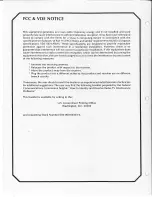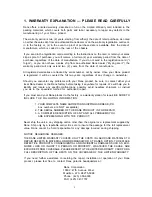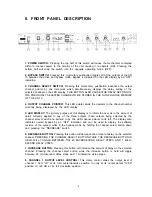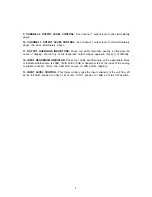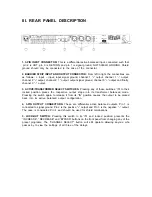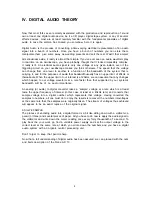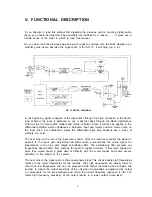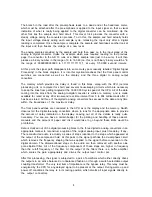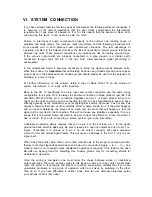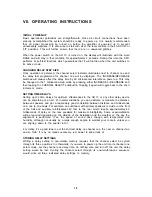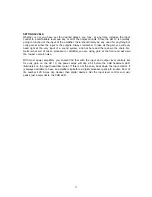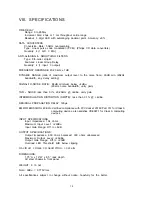
VII. OPERATING INSTRUCTIONS
When the power switch on the AD 13 is turned on, the display will illuminate with the word
RANE and will stay in that condition for approximately 2 seconds. During this time the CPU
performs its self-test functions which guarantees that it will function when the unit switches to
its active mode.
10
Writing a delay setting to non-volatile memory requires that the channel select be cycled
through its three positions. In otherwords, if you were to power up the unit into its channel one
select mode, set the channel one delay time, do nothing else and turn off the unit, the delay
setting would be lost. Cycling the channel select through its one-two-three-one sequence
would write all three indicated delay settings to memory.
For clarity, it’s a good idea to put the shortest delay on channel one, the next on channel two,
and so forth. It is by no means necessary, just easier to keep track of.
Setting up the time delays for optimum effectiveness in the AD 13 or any other delay device
can be something of an art. For normal situations, you can estimate or measure the distance
between speakers and get a reasonably good correlation between distance and milliseconds
on a one to one basis. For example, an auditorium with primary speakers or cluster at the front
of the hall and auxiliary reinforcement 40 feet to the rear would require approximately 40
milliseconds of delay on the rear speakers for maximum intelligibility. Some experimentation
will be required depending on the altitude of the installation and the weather on the day the
alignment is performed. (Yes, the speed of sound does change with temperature and
humidity, although not usually by a large enough degree to warrant your concern unless you
are aligning down to the quarter inch.)
Once operation is achieved, the channel select indicator illuminates next to channel one and
the delay last programmed for channel one will be displayed. The INCREASE/DECREASE
switches will always affect the delay time by 20 microsecond intervals on power up. This may
be changed to the 1 millisecond step mode by pressing either INCREASE or DECREASE and
then tapping the CHANNEL SELECT pushbutton. Tapping it again will toggle back to the short
increment mode.
Basic operational guidelines are straightforward. Once all circuit connections have been
properly accomplished the system should be ready to power up. It is usually recommended
that all signal processing be turned on before the amplifier is powered up to prevent
unnecessary surprises. It is also wise to start with all of the level controls in their full CCW or
“off” positions. This will further ensure that there are no unwanted glitches.
INITIAL POWER-UP
CHANGING DELAY STEP SIZE
SETTING TIME DELAYS
STORING DELAY SETTINGS


